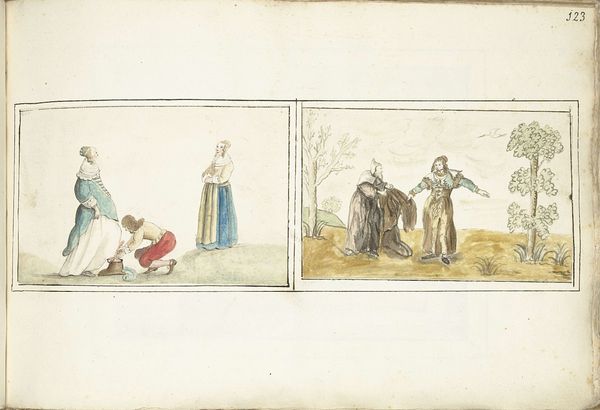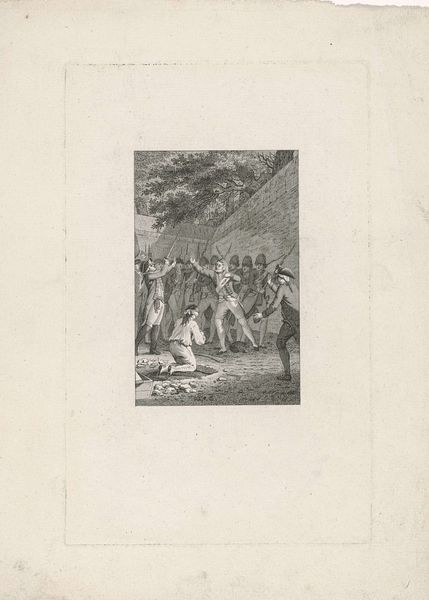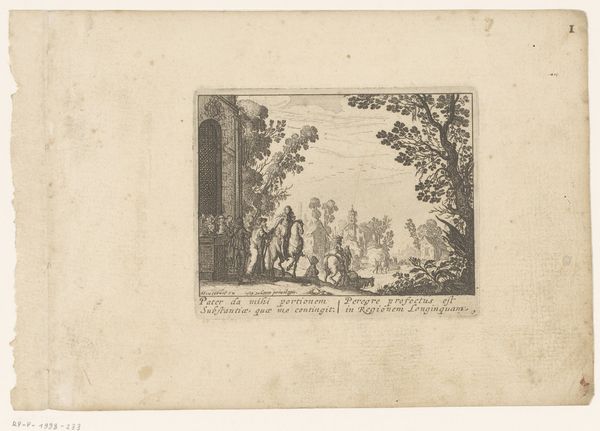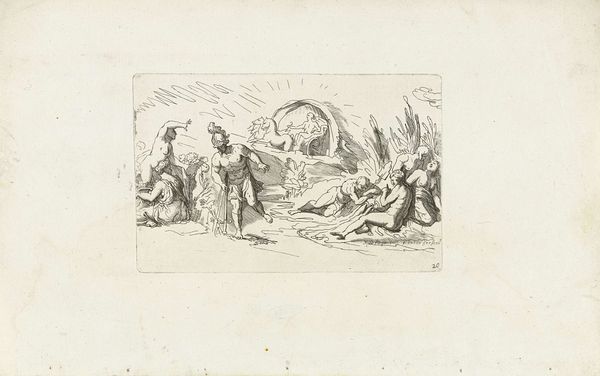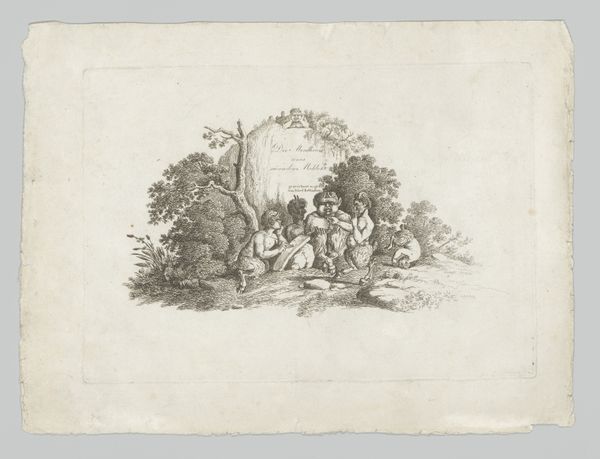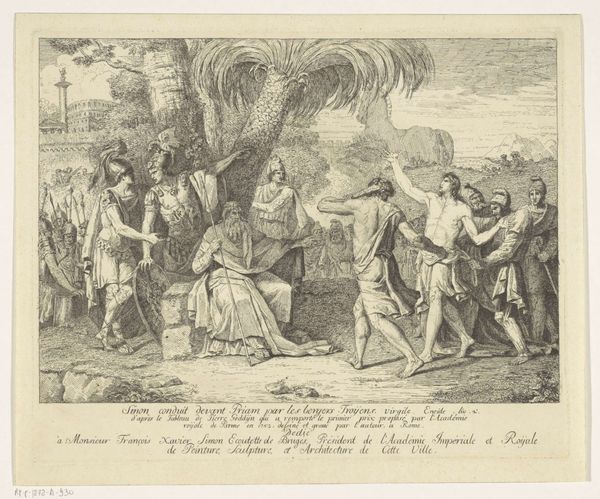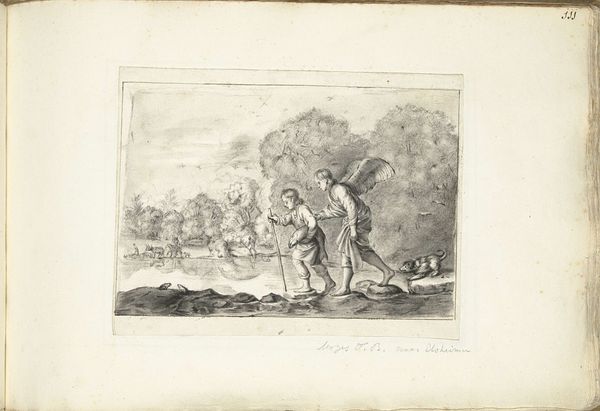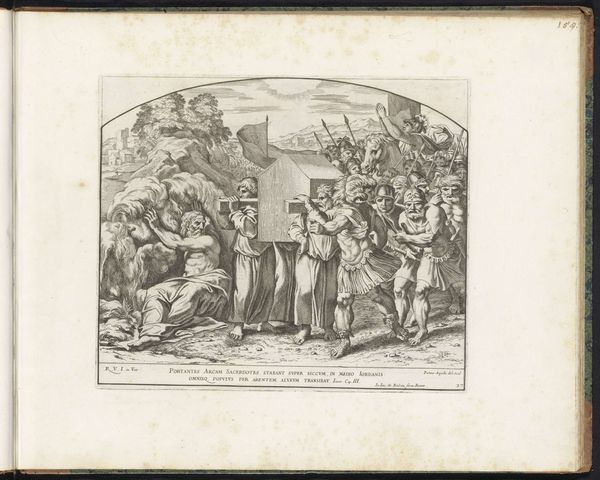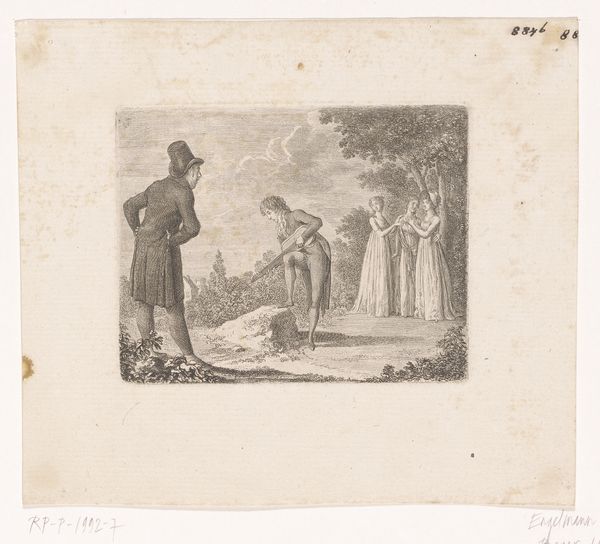
drawing, coloured-pencil, paper, watercolor
#
drawing
#
coloured-pencil
#
water colours
#
narrative-art
#
dutch-golden-age
#
landscape
#
figuration
#
paper
#
watercolor
#
coloured pencil
#
genre-painting
#
mixed media
#
miniature
Dimensions: height 243 mm, width 360 mm
Copyright: Rijks Museum: Open Domain
Curator: Here we have "Moses and Tobias with the Angel," a work on paper using colored pencil and watercolor, created around 1655 by Gesina ter Borch. It’s currently held in the Rijksmuseum. Editor: It's quite charming. The colors are soft, almost faded, lending a dreamlike quality. There are two scenes here – a miniature diptych almost – with distinctive light and atmosphere. Curator: Precisely. Ter Borch came from a family of artists, and her artistic output offers some fascinating insights into the lives of women artists in the Dutch Golden Age, especially regarding representation in civic society. Ter Borch seems focused on a feminine angle of historical and biblical interpretations. Editor: The narratives on display certainly strike different chords. On the left, we see a group of women gathered around a river with a baby in a basket – Moses, obviously, left among the reeds. Their gestures are expressive, suggesting both concern and maybe also a hint of wonder? On the right, the winged angel accompanying Tobias definitely reads as a figure of protection and guidance. Are these stories meant to be read against one another? Curator: It is probable, these pieces were part of an album, implying deliberate curation and contextualization. In the Dutch Golden Age, allegories and biblical narratives were subtly employed in artistic productions. Editor: Both are rendered with a gentleness that stands out. The landscape details—the small palm tree next to Tobias, the figures tending baby Moses with so much gentility – everything points to care. Even though it is just a sketch with few lines. Curator: We see here not merely a biblical interpretation but rather an exploration of the artist's socio-political perspective on a cultural and familiar language for a specific public. Editor: The symbolic and cultural relevance of these biblical stories endures even today; there’s something universal about protection, guidance, or simply feminine sensitivity as seen through the composition that Ter Borch is exploring, wouldn't you agree? Curator: Yes, the intimacy and perspective give these miniature vignettes the power to transcend their historical context and resonate with a very intimate tone for modern audiences. Editor: Well said. I am thankful I've had the opportunity to stop and reflect on it. Curator: Likewise, it’s been a pleasure to explore Ter Borch’s perspectives with you.
Comments
No comments
Be the first to comment and join the conversation on the ultimate creative platform.
